
Contents




Flowers at Suncheon Bay

Artistic Director of Dance Makes Modern Dance like Live Film

Quilting Squares of Tolerance

2018 Inter-Korean Summit




Gimbap
A Substantial Meal that You Can Easily Enjoy Anywhere, Anytime
Asked about gimbap rice rolls, most people recall memories of a picnic. There was a time when a lunch box couldn’t be missed on picnics, as rice rolls were the best choice. It wasn’t an exaggeration to say that the day of a school fieldtrip was the day to pack gimbap. This also means that the dish wasn’t for everyday meals. Easy to eat, the simple food is filled with mother’s love with all kinds of fillings, such as fried and cut egg, ham, beef, seasoned spinach and carrots. This special meal for a picnic has now become a convenient and substantial meal for our busy daily lives.
Written by Park Ji-yeon Photographed by Studio Kenn
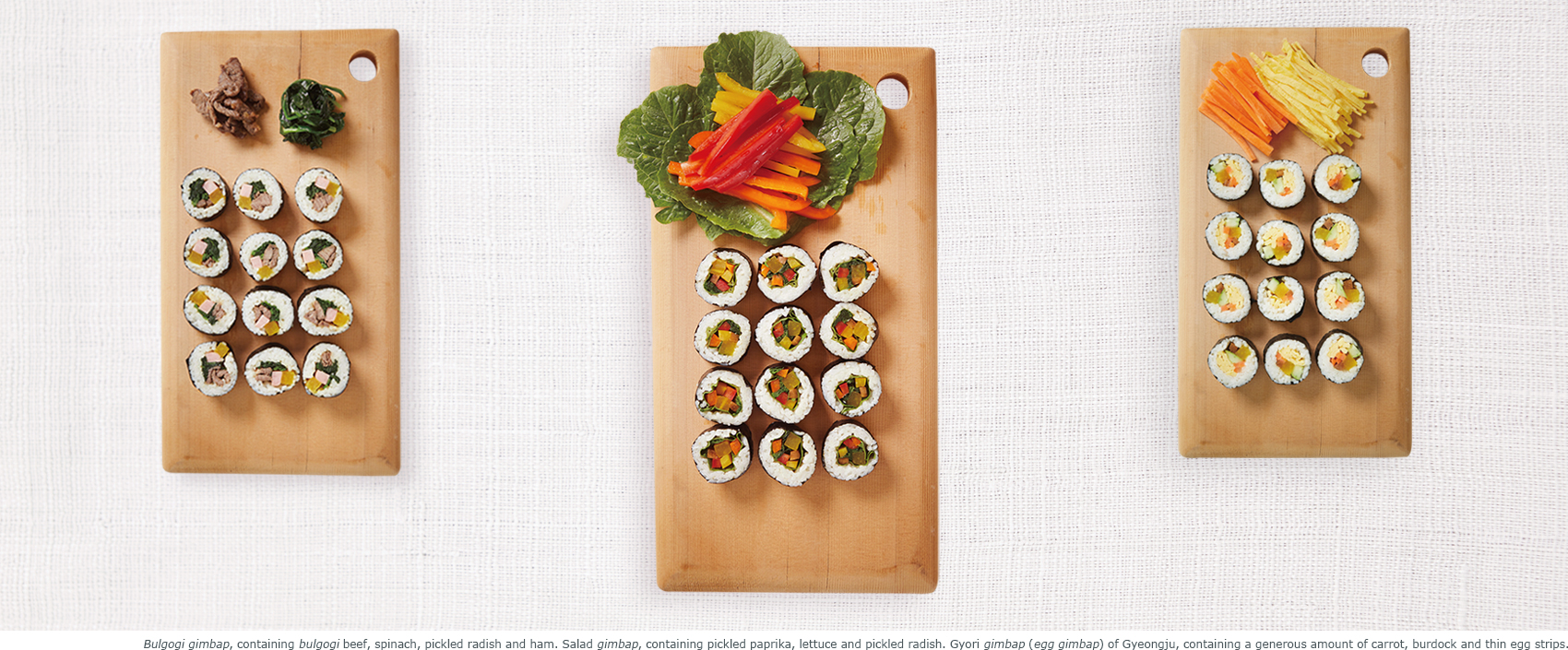
From Special Food to Everyday Meal
Toasted laver seaweed, gim in Korean, is one of the favorite side dishes for people of all ages and sexes. Even when there’s no other food around but toasted laver and rice, it’s enough for them to make one meal. Gimbap, a representative food for school picnics in the 1970s and 1980s, used to give mothers an opportunity to show off their cooking skills. The main ingredients, laver and rice, were common, but the fillings had a wide range. It was another fun part of the picnic to share so similar, yet so different, gimbap recipes with each other. At the time, the food was for special occasions, like seaweed soup on birthdays or rice cake soup on Seollal Lunar New Year’s.
However, this special food has now become a regular daily item for convenient meals. The dish is popular among busy people today because it’s easy to eat anywhere, anytime. Another virtue is that there’s a large variety of choice, as the fillings can be customized to one’s taste. While eggs, carrots, radish and ham are basically included, the name of the gimbap is given according to the characteristic ingredients of the filling, such as tuna, cheese or beef. One without filling but with rice wrapped in laver is chungmu gimbap, served with seasoned squid and radishes. It’s the local food in Tongyeong, Gyeongsangnam-do Province, and is said to be from the days when the fishermen’s wives made it for their husbands who used to substitute a proper meal with some alcohol and a gimbap while at sea. As it’s capable to develop a variety of menu choices depending on the fillings, gimbap has established itself as a daily meal by satisfying the demanding tastes of modern people who have a clear preference for food.

Jyoti Deshpande’s Daily Food, Gimbap
In this issue, Jyoti Deshpande from India would like to introduce a daily Korean food item. She’s a software engineer and has been living in Korea with her husband for five years. As their children remain in India and they are busy working in Korea, they usually eat simple Korean foods. Their favorite is gimbap. “Gimbap is perfect in every way. It is nutritious, low in fat, delicious and easy to pack.” Deshpande’s ode to the food has not yet finished, though. “It’s good for breakfast, lunch and even dinner, as well as for a snack with a drink.” She gives gimbap unstinted praise.
“I like to eat it, but I thought it would be difficult to make. Now, while introducing Korean foods, I cannot help but try!” She finally tried to make gimbap.
Lee Min-jung, a chef who runs Korean cooking classes for non-Koreans, helped her make the dish. The menu Deshpande and the chef chose, considering the preferences of non-Korean people, was bulgogi gimbap, Gyeongju Gyori gimbap and salad gimbap. Given the fact that most non-Koreans’ top favorite Korean food is bulgogi, it’s not that hard to predict that non-Koreans will also be fond of bulgogi gimbap. Eating the gimbap, which contains sweet bulgogi, is like eating rice mixed with seasoned beef. Gyeongju Gyori gimbap is named after the place Gyori, or Gyochon, and is characterized by the main filling of julienned fried eggs. This is very popular among non-Koreans, as well as Koreans, and it’s also easy to make at home. Salad gimbap is a menu item for vegetarians.
Gimbap?
Everyone Can Make It Easily!
Before making gimbap, we asked Deshpande about the process and if she thought it was difficult. She said that it looked difficult to roll and cut the gimbap. We started to see if the process would be as difficult as she thought it would be. The first step was to prepare the ingredients, such as paprika, radish and carrots, and most of them are not unfamiliar to non-Koreans.
One of the most unusual acts is for them is to fry an egg into a thin and round shape and to cut it. It’s not even easy for Koreans to turn the fried eggs using chopsticks, but Deshpande said that the job wasn’t that hard because it was similar to the way to make naan. Although there’s a unique cuisine in each country, there also seem to be some common parts.
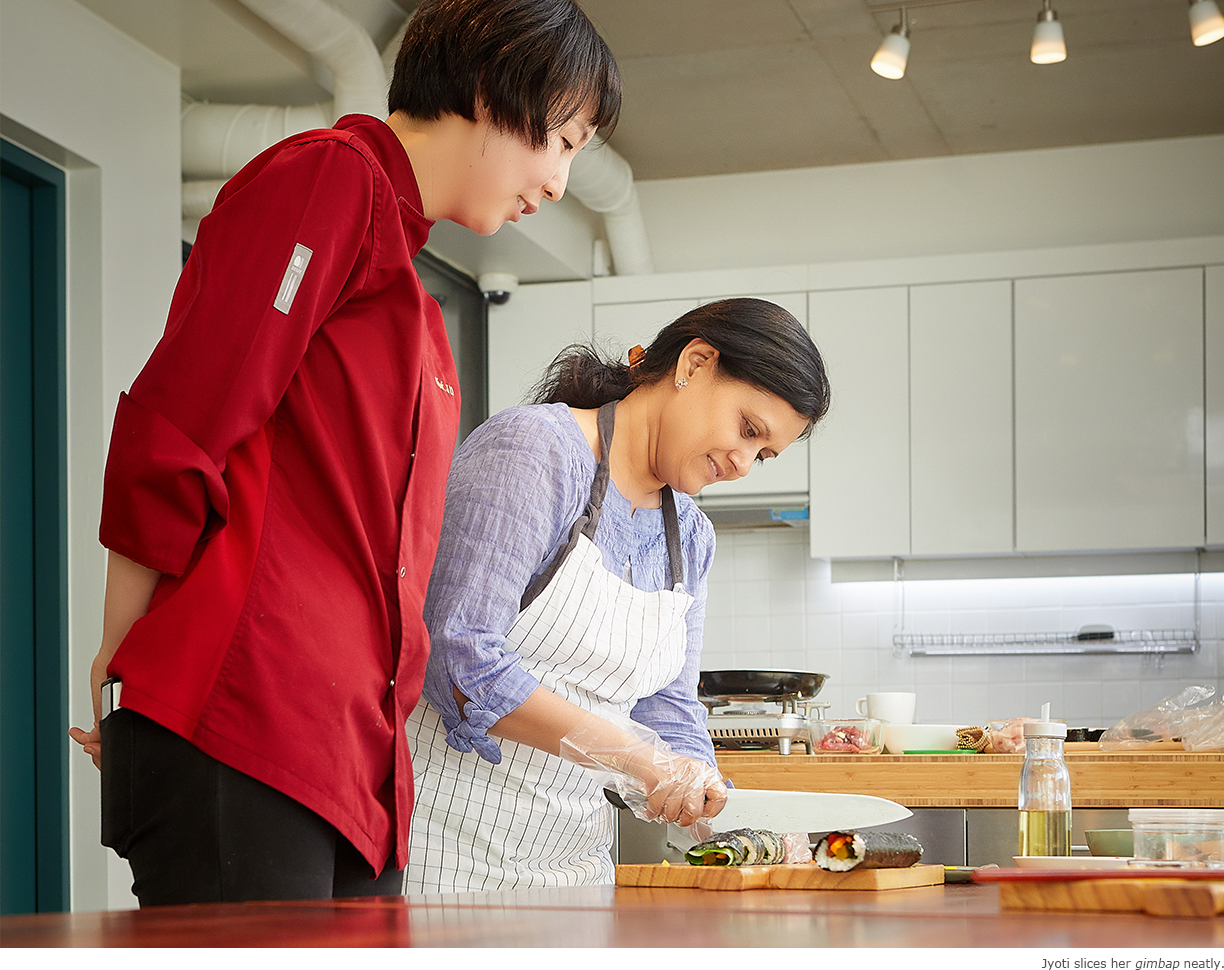
After frying the egg, she went into the main job of rolling the rice and seaweed. First, place a sheet of toasted laver onto a bamboo mat and evenly spread cooked rice over top of it. The important thing is that the rice should cover two thirds of the laver and be spread evenly.
Deshpande’s skill to spread rice evenly was pretty good. On the spread rice, put the prepared vegetables and other ingredients and roll the mat along with the laver and rice over the filing, so that one edge of the rice and laver reaches the opposite edge. Put some sesame oil on the finished rolls and chop it up with a knife to finalize bite-sized gimbap. “I didn’t know it would be so simple! It’s so easy even for beginners!” She couldn’t hide the joy that she had completed her own first gimbap.
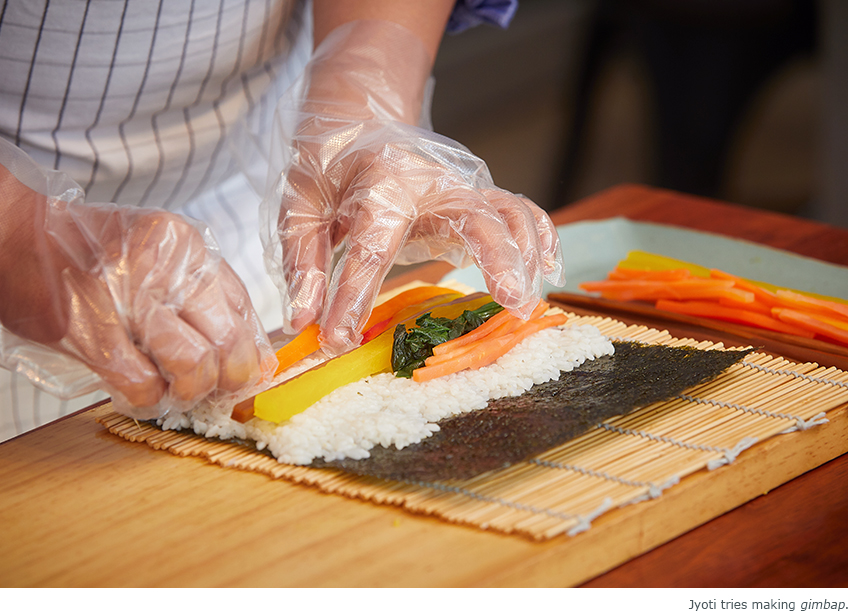
A Dish of Respect and Consideration
Jyoti said she never considered making gimbap on her own, even though she was a big fan of it. Now that she has tried making it with her own hands, she was filled with confidence and showed her determination to make gimbap for her husband and her family, with India’s own ingredients and spices to give a delicious twist.
Indians do not eat pork or beef, which perhaps becomes an inconvenience when visiting other countries, as they would have to do some research beforehand to find restaurants where they could eat without worrying. We had this image of her struggling to find things on the menu that she would enjoy, while feeling homesick for Indian food in a remote foreign land. Of course, there are vegetarians in Korea, but the majority of the population are meat-eaters. Maybe that’s why she wanted to recommend gimbap to her Indian friends in Korea. Gimbap, which can be made to preference with all kinds of ingredients for both meat eaters and vegetarians alike, truly embodies respect and consideration for individual tastes.
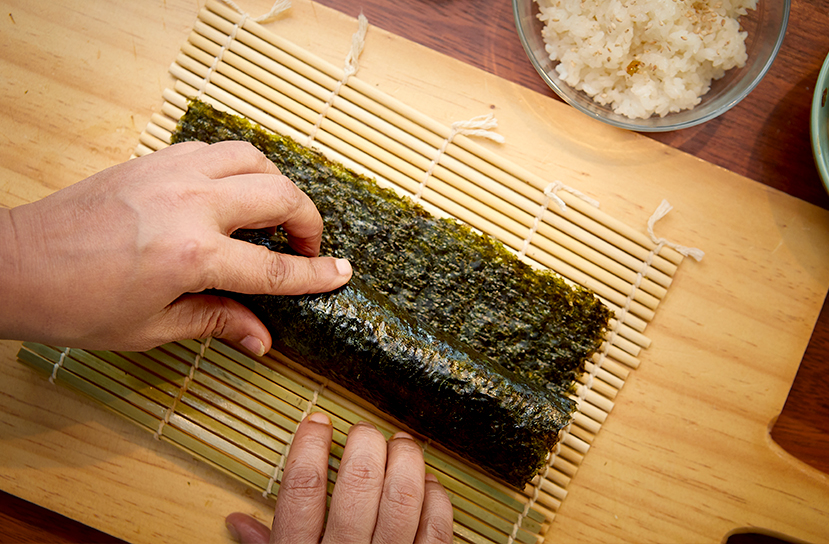
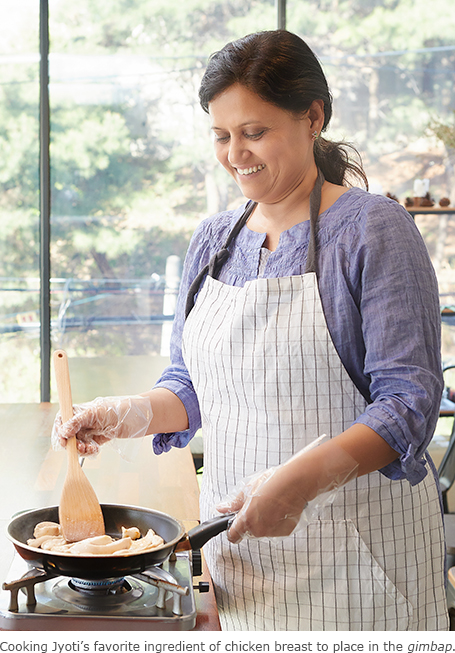
Jyoti, who absolutely adores Korean food and whose favorite dish is soft tofu stew, has a dream of pening a Korean restaurant in India. It’s not simply because Korean food is tasty, but also that Korean cuisine considers individual eating habits as well as health. Hearing what she said, we began to think that this simple dish, which can be made singlehandedly, may have the capacity to bring together individuals from different culinary cultures around the world in solidarity. We felt a sense of pride in this humble, everyday dish.
Cook Tip
-
Gimbap
2 cups rice, toasted laver, carrot, pickled radish, egg, cucumber, spinach, ham, sugar, soy source, salt, sesame, sesame oil
*Here you can add other ingredients such as chicken breast, bulgogi and pickled salad, depending on your taste.
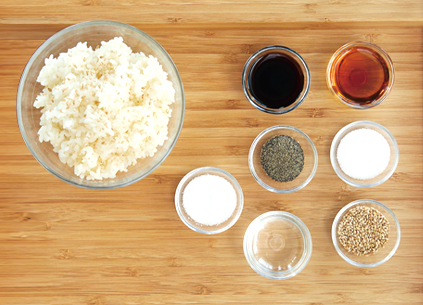
-
Tteokbokki
100g garae-tteok (cylinder-shaped rice cakes), 4 tablespoons Korean red chili pepper paste, 2 tablespoons sugar, 50g fish cake, 20g carrot, 50g green onion, 50g cabbage, 500ml water
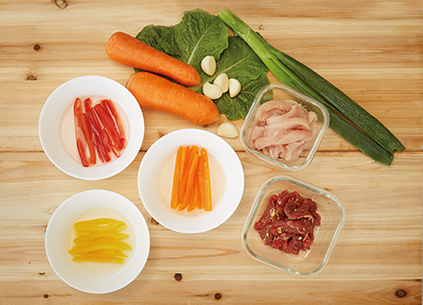
Other Articles




Flowers at Suncheon Bay

Artistic Director of Dance Makes Modern Dance like Live Film

Quilting Squares of Tolerance

2018 Inter-Korean Summit



Application of subscription
Sign upReaders’ Comments
GoThe event winners
Go


 May 2018
May 2018


